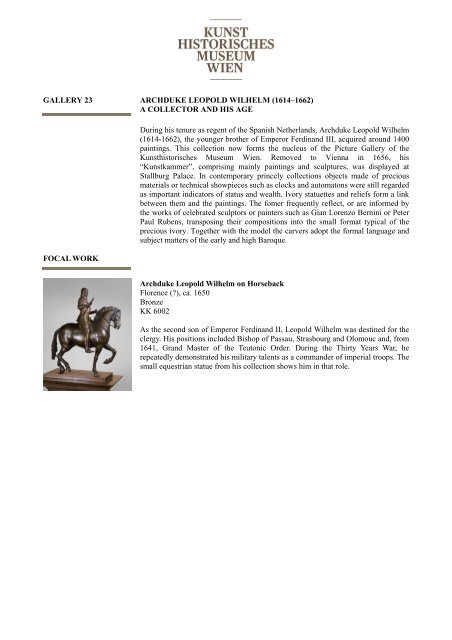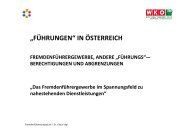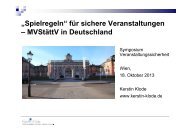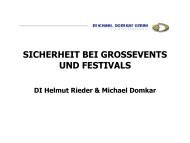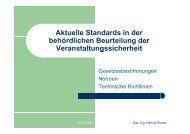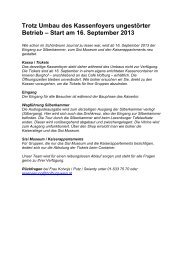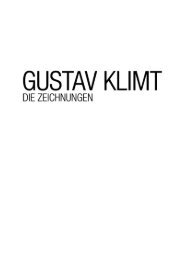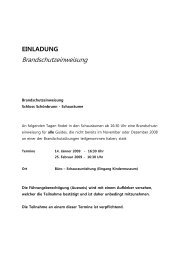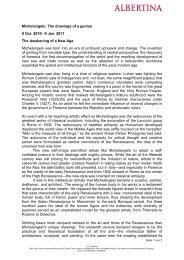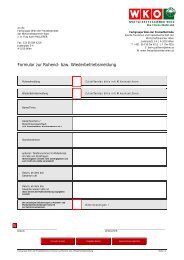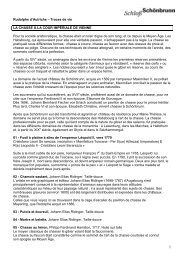kunstkammer vienna the cradle of the museum - Freizeitbetriebe ...
kunstkammer vienna the cradle of the museum - Freizeitbetriebe ...
kunstkammer vienna the cradle of the museum - Freizeitbetriebe ...
Create successful ePaper yourself
Turn your PDF publications into a flip-book with our unique Google optimized e-Paper software.
GALLERY 23 ARCHDUKE LEOPOLD WILHELM (1614–1662)<br />
A COLLECTOR AND HIS AGE<br />
FOCAL WORK<br />
During his tenure as regent <strong>of</strong> <strong>the</strong> Spanish Ne<strong>the</strong>rlands, Archduke Leopold Wilhelm<br />
(1614-1662), <strong>the</strong> younger bro<strong>the</strong>r <strong>of</strong> Emperor Ferdinand III, acquired around 1400<br />
paintings. This collection now forms <strong>the</strong> nucleus <strong>of</strong> <strong>the</strong> Picture Gallery <strong>of</strong> <strong>the</strong><br />
Kunsthistorisches Museum Wien. Removed to Vienna in 1656, his<br />
“Kunstkammer”, comprising mainly paintings and sculptures, was displayed at<br />
Stallburg Palace. In contemporary princely collections objects made <strong>of</strong> precious<br />
materials or technical showpieces such as clocks and automatons were still regarded<br />
as important indicators <strong>of</strong> status and wealth. Ivory statuettes and reliefs form a link<br />
between <strong>the</strong>m and <strong>the</strong> paintings. The fomer frequently reflect, or are informed by<br />
<strong>the</strong> works <strong>of</strong> celebrated sculptors or painters such as Gian Lorenzo Bernini or Peter<br />
Paul Rubens, transposing <strong>the</strong>ir compositions into <strong>the</strong> small format typical <strong>of</strong> <strong>the</strong><br />
precious ivory. Toge<strong>the</strong>r with <strong>the</strong> model <strong>the</strong> carvers adopt <strong>the</strong> formal language and<br />
subject matters <strong>of</strong> <strong>the</strong> early and high Baroque.<br />
Archduke Leopold Wilhelm on Horseback<br />
Florence (?), ca. 1650<br />
Bronze<br />
KK 6002<br />
As <strong>the</strong> second son <strong>of</strong> Emperor Ferdinand II, Leopold Wilhelm was destined for <strong>the</strong><br />
clergy. His positions included Bishop <strong>of</strong> Passau, Strasbourg and Olomouc and, from<br />
1641, Grand Master <strong>of</strong> <strong>the</strong> Teutonic Order. During <strong>the</strong> Thirty Years War, he<br />
repeatedly demonstrated his military talents as a commander <strong>of</strong> imperial troops. The<br />
small equestrian statue from his collection shows him in that role.


